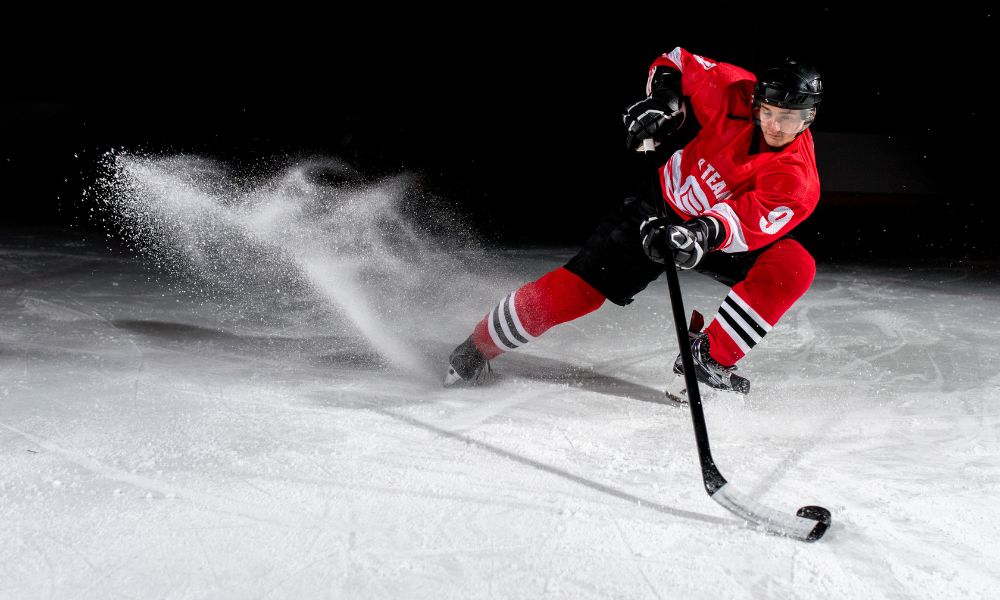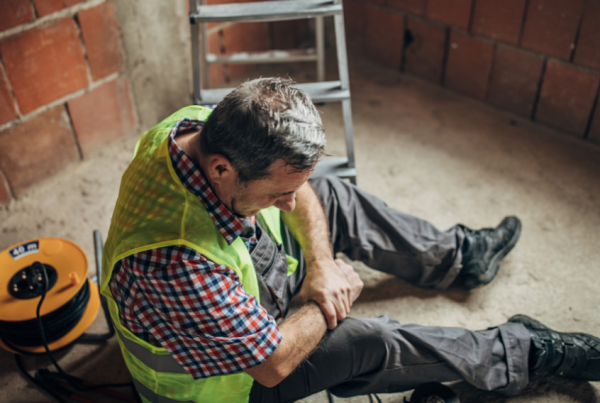Sports Performance Training
Move Better. Live Fuller. Your Wellness Journey Starts Here.
Schedule a FREE Discovery Call!
What Is Sports Performance Training?
Did you know that physical therapists can help you improve your sports performance? Physical therapy is a great way to improve your mobility, flexibility, strength, and overall performance. Working with a professional in this field is incredibly beneficial, as they are experts of the body and musculoskeletal system!
While physical therapists can provide traditional physical therapy for injuries, surgeries, and other problems, they are also very skilled in enhancing your physical abilities and reducing your risk of injury. When working with a Hive physical therapist, you can feel confident knowing your provider creates an individualized and evidence-based plan of care for your unique needs.

They’ll create this plan of care while considering your medical history, current muscle balance and physical capabilities, and unique sports needs. This plan looks to enhance your performance and long-term health by addressing a variety of aspects related to sports, such as:
- Strength
- Power
- Agility
- Endurance
- Flexibility
- Injury prevention
You can expect your sports performance training to have sports-specific drills, exercises, and other activities that will progressively become more challenging as you improve with time and consistency. We’ll get into the specifics of this process later, but first, let’s discuss which candidates are best suited to sports performance training…
Who Can Benefit From Sports Performance Training?
Many individuals can benefit from sports performance training, whether they play their sports recreationally or professionally. This training can not only address physical imbalances or movements that could lead to injury, but it can also push individuals closer to their performance goals by identifying inefficiencies or weaknesses.
Therefore, sports performance training is great for anyone who wants to address their weaknesses, improve their musculoskeletal health, or proactively start preventative health! Below, we’ve listed some examples where an athlete would benefit from sports performance training with a physical therapist:
Identifying Deficiencies
Physical therapists are very skilled in identifying imbalances or weaknesses in your mobility, movements, stability, and strength. This can include deficiencies like joint stiffness, muscle imbalances, or poor posture. They’ll observe the movements associated with your sport, and improve these movements to make them more efficient. This process can prevent injury and significantly enhance performance!
Overcoming Performance Obstacles
In some cases, athletes may struggle to improve performance due to a variety of factors. These factors are often physical limitations, such as lacking in endurance or flexibility. Luckily, physical therapists can provide assistance in identifying and overcoming these barriers. They’ll create a specialized plan based on your weaknesses to help you overcome that slump!
Past Injuries
Those who have experienced injury in the past will definitely want to work alongside a physical therapist. There are many things that can cause sports injuries, and some causes can become chronic. A professional will be able to determine if you have properly recovered from a past injury, and if you have developed compensatory patterns as a result of that injury.
If there are problems arising from this past event, they will incorporate specialized training and rehabilitation to target impairments or factors that are affecting performance. This can include strengthening, improving flexibility, or addressing scar tissue.
Chronic Injuries
Chronic injuries refer to those that are long-lasting or recurrent. Chronic injuries can range in severity, meaning they can create pain that is mild or severe. Regardless of the severity, these types of injuries need to be addressed, as they can worsen with time and significantly impact performance and musculoskeletal health. Oftentimes these injuries are caused by poor form or technique, failure to warm up properly, and other factors that your physical therapist can identify and correct.
Youth Training
Engaging young athletes in physical therapy and sports performance training is a great way to prevent injury and correct movement patterns at an early stage of their sports career. This can involve screenings to look for any deficits or areas that could benefit from training, and working to improve those areas in order to set youths on the right track.
Returning to Sports
Individuals returning to sports after a break, such as rehabilitation from injury or surgery, will want to safely and smoothly transition back to their sport. Physical therapists can restore your musculoskeletal health and improve on any physical deficits that developed as a result of the break. Additionally, those who want to maintain fitness and enhance their skill during off-season periods can benefit from transitional sports training, too.
Physical Therapy for Sports Performance
Receiving treatment and training from a Hive physical therapist offers unique benefits. Not only can you expect the obvious aspects of strengthening or endurance training, but you’ll also work on improving the mobility, stability, and flexibility of your body—all which play a role in sports, even if you don’t realize it!
Working with a physical therapist can even identify any potential health problems or physical deficits that you may not have noticed. This is useful for avoiding future health issues or chronic injuries!
To begin, your physical therapist will perform an evaluation and physical examination. This process allows your physical therapist to:
- Understand your sport and the role you play in that sport (if it is a team sport).
- Explore any symptoms you experience and identify their causes.
- Understand any chronic conditions you may have and how they affect performance.
- Determine if past injuries or surgeries are affecting performance.
- Identify performance strengths and weaknesses through physical testing.
- Evaluate aspects such as strength, range of motion, endurance, flexibility, stability, balance, and more.
- Assess sports-specific movements (such as running, jumping, kicking, or throwing).
These assessments will allow your physical therapist to create a comprehensive physical therapy plan to improve your sports performance. This plan will be curated to your individual needs and sport, and can involve treatments such as:
Strengthening and Stretching
As you would expect, strengthening and stretching will be a major form of your sports performance training. Your physical therapist will formulate a specialized exercise plan to improve on a variety of your muscle groups. This exercise plan will depend on your current strengths and weaknesses, as well as your sport. However, it will likely include things such as:
- Muscle group strengthening and coordination
- Exercises and drills to improve speed, agility, and power
- Conditioning and training to improve endurance
- Stretching, yoga, and joint mobilizations to improve mobility, flexibility, and range of motion
- Balance exercises to improve core stability, balance, and control
In some cases, your body may benefit from specialized care, such as pelvic floor physical therapy. Your pelvic floor is a group of muscles in the pelvis that play a huge role in a wide variety of sports activities! Its health and strength matter just as much as the rest of your body’s muscles. Therefore, if necessary, your Hive physical therapists can collaborate to provide a more comprehensive form of care to get you in the best shape. To learn more, feel free to explore our pelvic floor sports performance training page.
Neuromuscular Re-Education
Treatments like neuromuscular re-education and biofeedback work to improve the coordination between your muscles and your brain. It helps restore smooth, efficient movement patterns and the correct activation of muscles during those movements. Improving these aspects reduces strain, prevents injury, and allows for better performance.
Your physical therapist will lead you through this treatment process and training with movements specific to your sport and individual needs. They’ll identify faulty movement patterns or habits that may contribute to injury, and work to correct those to improve your sports performance.
Rehabilitation and Manual Therapy
For individuals who have experienced previous injuries or surgeries, your physical therapist will be sure to evaluate the affected area for function, tightness, range of motion, and scar tissue. If there are any weaknesses present, this can lead to reduced performance and a potential for re-injury. To counteract this, your physical therapist will lead you through a variety of rehabilitative treatments, such as electrical muscle stimulation, neuromuscular re-education, and manual therapy.
Manual therapy is a great example of a treatment used to improve mobility and range of motion. Manual therapy refers to manual techniques that use the provider’s hands or tools to mobilize soft tissues. This treatment reduces tightness, encourages tissue mobility, improves blood flow, and can enhance muscle activation and function. Some common examples of this type of treatment include cupping, tissue scraping, dry needling, and more.
Manual therapy isn’t just for rehabilitation. It is a fantastic type of treatment that is perfect for sports performance training. It can improve joint mobilization, scar tissue restrictions, and muscle function. So regardless of whether you have a past injury or surgery, your physical therapist will likely utilize this beneficial treatment!
Education and Injury Prevention
Physical therapists are very knowledgeable about keeping the body healthy and in good shape. They’ll be sure to teach you about a variety of topics to improve sports performance and maintain long-term health. To best support your health and to prevent injury, they’ll teach about a variety of these topics, such as how to:
- Progress through training safely and effectively
- Effectively warm up and cool down
- Recognize signs of overtraining
- Prevent overextension
- Maintain good posture and form
- Use self-applied techniques for recovery
- And more
Collaboration and Long Term Performance
Lastly, your physical therapist can play a significant role in long-term sports performance and health. By engaging in regular assessments with your physical therapist, they can track your progress and modify your at-home program as needed to meet goals or solve new challenges. Your Hive provider can even collaborate with other coaches, trainers, or health professionals as needed to best align their treatment and training with your needs.
This is just one way that Hive Therapy and Wellness strives to provide high quality treatment and care. While working with our providers, you will experience a variety of treatments during your individualized care plan. These treatments will be introduced as needed for your unique health or performance needs. Physical therapy treatments used by our providers include any of the following:
- Neuromuscular re-education
- Manual therapy
- Exercise prescription
- Dry needling
- Cupping
- Tissue scraping
- Behavioral modifications
- Therapeutic activities
- Electrical muscle stimulation
- Spinal manipulation
- Therapeutic modalities
- Biofeedback
Did you know that physical therapists can help you improve your sports performance? Physical therapy is a great way to improve your mobility, flexibility, strength, and overall performance.
Working with a professional in this field is incredibly beneficial, as they are experts of the body and musculoskeletal system!
While physical therapists can provide traditional physical therapy for injuries, surgeries, and other problems, they are also very skilled in enhancing your physical abilities and reducing your risk of injury.
When working with a Hive physical therapist, you can feel confident knowing your provider creates an individualized and evidence-based plan of care for your unique needs.
They’ll create this plan of care while considering your medical history, current muscle balance and physical capabilities, and unique sports needs.
This plan looks to enhance your performance and long-term health by addressing a variety of aspects related to sports, such as:
- Strength
- Power
- Agility
- Endurance
- Flexibility
- Injury prevention
You can expect your sports performance training to have sports-specific drills, exercises, and other activities that will progressively become more challenging as you improve with time and consistency.
We’ll get into the specifics of this process later, but first, let’s discuss which candidates are best suited to sports performance training…
Many individuals can benefit from sports performance training, whether they play their sports recreationally or professionally.
This training can not only address physical imbalances or movements that could lead to injury, but it can also push individuals closer to their performance goals by identifying inefficiencies or weaknesses.
Therefore, sports performance training is great for anyone who wants to address their weaknesses, improve their musculoskeletal health, or proactively start preventative health!
Below, we’ve listed some examples where an athlete would benefit from sports performance training with a physical therapist:
Identifying Deficiencies
Physical therapists are very skilled in identifying imbalances or weaknesses in your mobility, movements, stability, and strength. This can include deficiencies like joint stiffness, muscle imbalances, or poor posture.
They’ll observe the movements associated with your sport, and improve these movements to make them more efficient. This process can prevent injury and significantly enhance performance!
Overcoming Performance Obstacles
In some cases, athletes may struggle to improve performance due to a variety of factors. These factors are often physical limitations, such as lacking in endurance or flexibility.
Luckily, physical therapists can provide assistance in identifying and overcoming these barriers. They’ll create a specialized plan based on your weaknesses to help you overcome that slump!
Past Injuries
Those who have experienced injury in the past will definitely want to work alongside a physical therapist. There are many things that can cause sports injuries, and some causes can become chronic.
A professional will be able to determine if you have properly recovered from a past injury, and if you have developed compensatory patterns as a result of that injury.
If there are problems arising from this past event, they will incorporate specialized training and rehabilitation to target impairments or factors that are affecting performance. This can include strengthening, improving flexibility, or addressing scar tissue.
Chronic Injuries
Chronic injuries refer to those that are long-lasting or recurrent. Chronic injuries can range in severity, meaning they can create pain that is mild or severe.
Regardless of the severity, these types of injuries need to be addressed, as they can worsen with time and significantly impact performance and musculoskeletal health.
Oftentimes these injuries are caused by poor form or technique, failure to warm up properly, and other factors that your physical therapist can identify and correct.
Youth Training
Engaging young athletes in physical therapy and sports performance training is a great way to prevent injury and correct movement patterns at an early stage of their sports career.
This can involve screenings to look for any deficits or areas that could benefit from training, and working to improve those areas in order to set youths on the right track.
Returning to Sports
Individuals returning to sports after a break, such as rehabilitation from injury or surgery, will want to safely and smoothly transition back to their sport.
Physical therapists can restore your musculoskeletal health and improve on any physical deficits that developed as a result of the break.
Additionally, those who want to maintain fitness and enhance their skill during off-season periods can benefit from transitional sports training, too.
Receiving treatment and training from a Hive physical therapist offers unique benefits.
Not only can you expect the obvious aspects of strengthening or endurance training, but you’ll also work on improving the mobility, stability, and flexibility of your body—all which play a role in sports, even if you don’t realize it!
Working with a physical therapist can even identify any potential health problems or physical deficits that you may not have noticed. This is useful for avoiding future health issues or chronic injuries!
To begin, your physical therapist will perform an evaluation and physical examination. This process allows your physical therapist to:
- Understand your sport and the role you play in that sport (if it is a team sport).
- Explore any symptoms you experience and identify their causes.
- Understand any chronic conditions you may have and how they affect performance.
- Determine if past injuries or surgeries are affecting performance.
- Identify performance strengths and weaknesses through physical testing.
- Evaluate aspects such as strength, range of motion, endurance, flexibility, stability, balance, and more.
- Assess sports-specific movements (such as running, jumping, kicking, or throwing).
These assessments will allow your physical therapist to create a comprehensive physical therapy plan to improve your sports performance.
This plan will be curated to your individual needs and sport, and can involve treatments such as:
Strengthening and Stretching
As you would expect, strengthening and stretching will be a major form of your sports performance training.
Your physical therapist will formulate a specialized exercise plan to improve on a variety of your muscle groups. This exercise plan will depend on your current strengths and weaknesses, as well as your sport.
However, it will likely include things such as:
- Muscle group strengthening and coordination
- Exercises and drills to improve speed, agility, and power
- Conditioning and training to improve endurance
- Stretching, yoga, and joint mobilizations to improve mobility, flexibility, and range of motion
- Balance exercises to improve core stability, balance, and control
In some cases, your body may benefit from specialized care, such as pelvic floor physical therapy. Your pelvic floor is a group of muscles in the pelvis that play a huge role in a wide variety of sports activities!
Its health and strength matter just as much as the rest of your body’s muscles. Therefore, if necessary, your Hive physical therapists can collaborate to provide a more comprehensive form of care to get you in the best shape.
To learn more, feel free to explore our pelvic floor sports performance training page.
Neuromuscular Re-Education
Treatments like neuromuscular re-education and biofeedback work to improve the coordination between your muscles and your brain.
It helps restore smooth, efficient movement patterns and the correct activation of muscles during those movements. Improving these aspects reduces strain, prevents injury, and allows for better performance.
Your physical therapist will lead you through this treatment process and training with movements specific to your sport and individual needs.
They’ll identify faulty movement patterns or habits that may contribute to injury, and work to correct those to improve your sports performance.
Rehabilitation and Manual Therapy
For individuals who have experienced previous injuries or surgeries, your physical therapist will be sure to evaluate the affected area for function, tightness, range of motion, and scar tissue.
If there are any weaknesses present, this can lead to reduced performance and a potential for re-injury. To counteract this, your physical therapist will lead you through a variety of rehabilitative treatments, such as electrical muscle stimulation, neuromuscular re-education, and manual therapy.
Manual therapy is a great example of a treatment used to improve mobility and range of motion. Manual therapy refers to manual techniques that use the provider’s hands or tools to mobilize soft tissues.
This treatment reduces tightness, encourages tissue mobility, improves blood flow, and can enhance muscle activation and function. Some common examples of this type of treatment include cupping, tissue scraping, dry needling, and more.
Manual therapy isn’t just for rehabilitation. It is a fantastic type of treatment that is perfect for sports performance training. It can improve joint mobilization, scar tissue restrictions, and muscle function.
So regardless of whether you have a past injury or surgery, your physical therapist will likely utilize this beneficial treatment!
Education and Injury Prevention
Physical therapists are very knowledgeable about keeping the body healthy and in good shape. They’ll be sure to teach you about a variety of topics to improve sports performance and maintain long-term health.
To best support your health and to prevent injury, they’ll teach about a variety of these topics, such as how to:
- Progress through training safely and effectively
- Effectively warm up and cool down
- Recognize signs of overtraining
- Prevent overextension
- Maintain good posture and form
- Use self-applied techniques for recovery
- And more
Collaboration and Long Term Performance
Lastly, your physical therapist can play a significant role in long-term sports performance and health.
By engaging in regular assessments with your physical therapist, they can track your progress and modify your at-home program as needed to meet goals or solve new challenges.
Your Hive provider can even collaborate with other coaches, trainers, or health professionals as needed to best align their treatment and training with your needs.
This is just one way that Hive Therapy and Wellness strives to provide high quality treatment and care. While working with our providers, you will experience a variety of treatments during your individualized care plan.
These treatments will be introduced as needed for your unique health or performance needs. Physical therapy treatments used by our providers include any of the following:
- Neuromuscular re-education
- Manual therapy
- Exercise prescription
- Dry needling
- Cupping
- Tissue scraping
- Behavioral modifications
- Therapeutic activities
- Electrical muscle stimulation
- Spinal manipulation
- Therapeutic modalities
- Biofeedback
You can learn more about these treatments on our Treatments Page.





